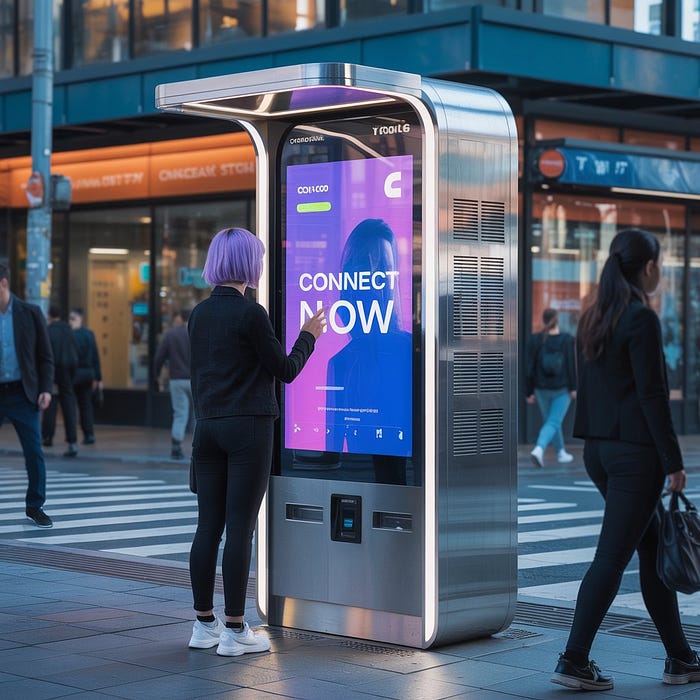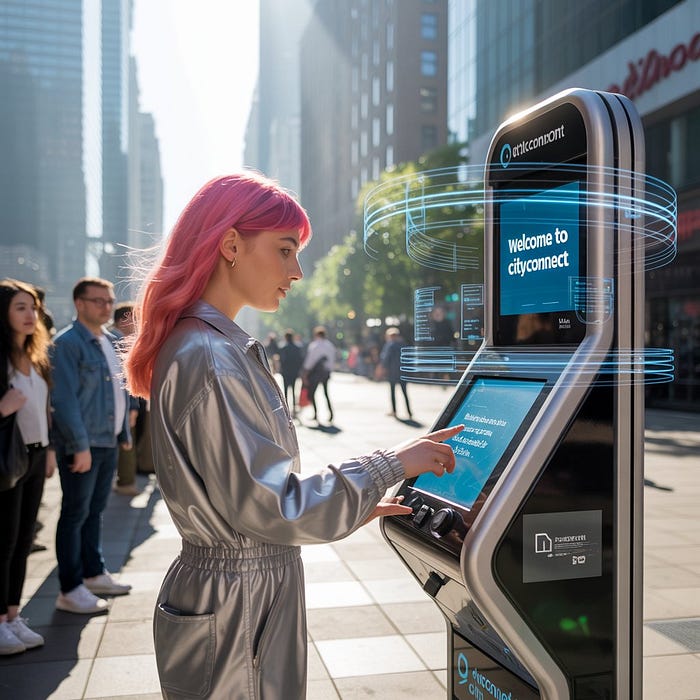The best placement spots for telecom kiosks in busy areas.

Telecom kiosks have emerged as crucial touchpoints in the digital service ecosystem, offering quick, accessible, and efficient telecom services such as SIM card purchases, mobile recharges, bill payments, and customer support. As telecom companies seek to enhance their service delivery and market penetration, the strategic placement of these kiosks in high-traffic areas becomes a vital factor in ensuring their success.
This blog explores the essential criteria for selecting optimal telecom kiosk locations, identifies high-potential public spaces, and discusses design and technology considerations for maximizing kiosk effectiveness and customer satisfaction.
Criteria for Selecting Optimal Telecom Kiosk Locations
Selecting the right location is the cornerstone of kiosk success. Several factors influence how effective a kiosk will be in attracting users and delivering services efficiently.
High Foot Traffic Areas
Locations with consistent high pedestrian movement are prime candidates for telecom kiosk placement. Malls, train stations, bus terminals, marketplaces, and busy street corners naturally draw a large number of potential users daily. These areas maximize visibility and offer repeated exposure to a diverse audience. High traffic not only increases the chances of customer interaction but also ensures that the kiosk serves as a consistent revenue-generating asset.
Visibility and Accessibility
A kiosk’s visibility greatly influences its usability. If users cannot easily spot the kiosk, they’re unlikely to engage with it. Placement should prioritize unobstructed views, clear signage, and lighting that highlights the kiosk. Additionally, accessibility is vital. Kiosks should be reachable for all users, including individuals with disabilities. This means incorporating ramps, intuitive UI/UX, and height considerations to ensure inclusive use.
Proximity to Target Customers
Understanding the target demographic and their movement patterns is essential. For instance, a telecom kiosk targeting young adults would perform better in or near college campuses. Similarly, placing kiosks in business districts ensures availability to professionals who might need quick telecom solutions during work hours. The closer the kiosk is to where the target customers already spend time, the more likely it is to attract and retain users.
Top Public Places Ideal for Telecom Kiosk Placement
Here are specific public locations that are consistently effective for telecom kiosk deployment in busy areas:
Transport Hubs: Airports, Metro Stations, and Bus Terminals
Transport hubs are high-volume areas where people from diverse backgrounds and geographies converge. These places see uninterrupted foot traffic across different times of the day. Kiosks placed here cater to travelers needing local SIMs, quick recharges, or roaming packages. Moreover, the urgency and immediacy of telecom services in such locations make them ideal for kiosk interactions.
Shopping Centers and Malls
Malls and shopping centers provide a captive audience with leisure time and spending intent. Consumers in these environments are often open to exploring new services or solving pending issues like bill payments. Telecom kiosks in malls can also serve as promotional hubs, offering exclusive deals, and facilitating plan upgrades or product demonstrations.
Universities and College Campuses
Educational institutions are excellent sites for telecom kiosks, particularly due to the tech-savvy nature of their student populations. Young adults often require affordable data plans, SIM card activations, and quick customer support. A kiosk on campus or in nearby commercial areas can become a go-to service point for students.
Business Districts and Commercial Areas
Placing kiosks in commercial zones where offices and businesses are clustered helps target working professionals. These users value speed and efficiency in service. A strategically placed kiosk can serve their needs during lunch breaks or commuting hours, offering a convenient alternative to visiting a full-service store.
Design and Placement Considerations for Maximizing Kiosk Effectiveness
The functionality and physical setup of telecom kiosks greatly influence user experience and operational efficiency. Key considerations include:
Ensuring Easy Access and User-Friendly Interface
Kiosk design must facilitate intuitive use. Interfaces should support multiple languages, use large and readable text, and offer step-by-step guidance. Contactless payment options, touchscreen responsiveness, and ergonomic design all contribute to a seamless transaction experience. Physical access should be unhindered, with enough surrounding space to accommodate multiple users.

Safety and Security Measures
Security is critical in kiosk deployment. Locations should be well-lit and monitored by CCTV. The kiosk itself must be built with tamper-resistant materials, and data security protocols should be robust to protect user information. Additionally, emergency contact information should be clearly displayed, and assistance features included for vulnerable users.
Strategic Positioning in Relation to Competitors
Evaluating the competitive landscape is vital. Placing kiosks in areas where competitors are absent provides a first-mover advantage. Alternatively, kiosks can be placed near competitors if offering unique value, such as faster service, better offers, or multi-language support. Analyzing competitor positioning helps in carving out a distinct market presence.
Leveraging Technology and Data for Smart Placement
Modern telecom businesses use advanced tools to determine optimal kiosk locations. Data-driven decisions enhance the success rate and ROI of kiosk deployments.
Using Foot Traffic Analysis Tools
Tools like heat maps, pedestrian tracking software, and location analytics platforms help identify areas with the highest movement. These tools track flow patterns, dwell times, and peak hours to guide smart placement decisions. Integration with GIS (Geographic Information Systems) can provide spatial insights for macro and micro-location planning.
Customer Behavior and Demographic Data Application
Understanding who the customers are and how they behave can fine-tune kiosk placement strategies. For instance, a telecom provider targeting migrant workers would benefit from placing kiosks in neighborhoods or markets frequented by this group. Combining telecom usage data with demographic profiles enables more precise targeting and improved service uptake.
Benefits of Optimal Telecom Kiosk Placement
Choosing the right locations delivers multifaceted advantages for telecom businesses:
Increased Customer Engagement and Sales
With kiosks strategically positioned in high-traffic areas, customer interaction naturally rises. This leads to higher transactions, increased plan upgrades, and more service subscriptions. The convenience factor encourages repeat use and builds customer loyalty.
Enhanced Brand Visibility and Trust
Well-placed kiosks reinforce the brand’s presence in the community. Consistent exposure in high-profile locations builds familiarity and trust. A visible and accessible kiosk also conveys a sense of reliability and commitment to service.
Improved Customer Convenience and Satisfaction
Accessibility, speed of service, and ease of use directly impact customer satisfaction. When customers can resolve issues or buy services without delay, their overall experience improves. This satisfaction translates into positive word-of-mouth and brand advocacy.
Conclusion
The strategic placement of telecom kiosks is not just a logistical decision — it’s a powerful business strategy. From transport hubs and malls to campuses and commercial zones, each location offers unique advantages when chosen thoughtfully. Incorporating user-centric design, leveraging technology, and analyzing data help maximize the effectiveness of these kiosks.
For telecom businesses, the key to maximizing kiosk potential lies in aligning location strategy with customer behavior, accessibility standards, and competitive dynamics. Thoughtful placement transforms telecom kiosks from mere service points into essential community assets and business growth drivers.
Comments
Post a Comment